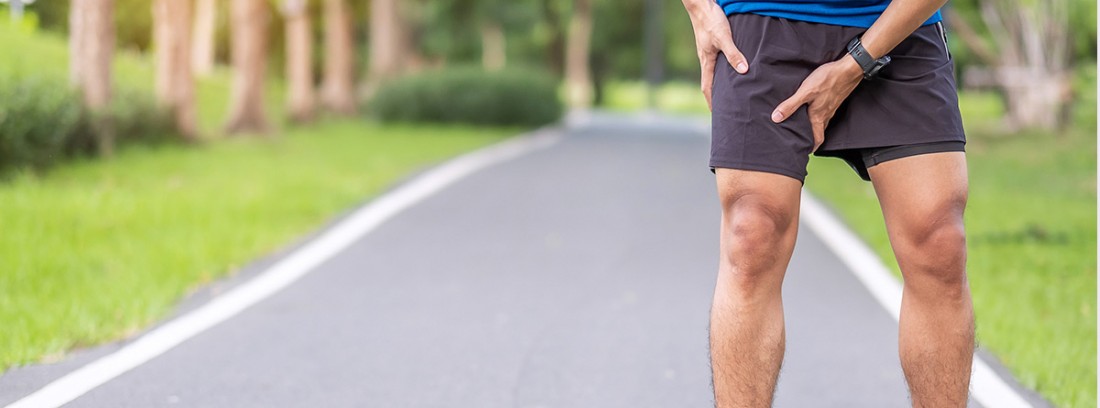Pubalgia

What symptoms does it cause
The pubic bone is a place where various muscles are inserted, the tendons become inflamed due to repetitive stress in the region of the pubic symphysis.
Many athletes, footballers, long-distance runners, among others, may feel uncomfortable pain in the region near the pubic symphysis. Usually caused by overload, overuse or direct trauma causing swelling and pain.
The pain only increases in intensity when the disease worsens. The onset of pubalgia is insidious and increases progressively until movement is limited. Over time, pain that used to be concentrated in the hip can migrate to other parts, such as the lower abdomen and groin.
This disease can be easily confused with other problems such as muscle tears, urinary tract infections or adductor muscles.
The symptoms are identical to those of a muscle strain, such as pain during running or during abdominal exercises or squats.
pain may also appear in the lower abdominal region, sometimes with radiation to the inner thigh. And it can be felt at the insertion of the rectus abdominis muscle.
Lateral trunk movements, nodding, hip and trunk flexions can be painful.
This pain worsens with exercise, exertion or with certain postures, and can be felt even when climbing stairs.
The pain can also radiate to the perineum (it is the part of the body that gives rise to the pelvic floor and where the anus and external genitalia are located) and the testicles. It can cause low back pain when associated with a sacroiliac injury.
What can lead to its appearance
- Athletes are usually subjected to a large amount of training, many times without having enough time to rest or for an adequate stretching program, which predisposes to the appearance of this entity. Therefore, the lack of or inadequate stretching of the adductor muscles of the thigh, added to the excess of abdominal exercises performed by athletes, can cause a muscle imbalance in the pubic symphysis and, consequently, pubalgia.
- pubalgia.
- On the other hand, there are risk factors that are intrinsic to each person, such as congenital or acquired anomalies of the abdominal wall, especially in its lower locations, such as anomalies of the inguinal canal or inequalities in the length of the lower limbs that are very frequent. and that generate pelvic instability.
- The quality of the flooring and the shoes used (hard floors and the use of shoes with low shock absorption) can also contribute to the development of pubalgia.
Diagnosis
The diagnosis of pubalgia may be delayed, given the large number of disorders affecting this region of the hip, which can mask the symptoms of pubalgia and delay its diagnosis.
In general, the diagnosis is clinical, being confirmed by radiography of the pelvic area, when observing the presence of instability of the pubic symphysis in more than 2 mm. The radiograph also reveals the presence of signs of bone thickening, a sign that reflects the presence of inflammation.
Magnetic resonance imaging allows the study of soft tissues.
Treatment and prevention
Treatment includes:
- Repose,
- Ice
- Oral anti-inflammatories.
- Warm water compresses (after the acute phase) on the region, which promote vasodilation, which is beneficial in reducing pain and relaxing the adjacent muscles.
- Stretching exercises (when pain subsides) of the muscles of the inner thigh region, exercises for strengthening the adductors, abductors, hip flexors and extensors, and stabilization exercises for the trunk and spine.
Return to sports activity can occur in milder cases after three to five days. In more serious casess, rest and treatment should last for three weeks to three months, and it may take up to six months. If, after three months, conservative treatment is not effective, it should be considered.
CALCULATE YOUR PRICE
As for prevention, it involves training and prevention and treatment of all predisposing factors. The abdominal muscles must be well worked and muscle stretching must be done in all workouts, in order to achieve a correct dynamic balance of the pelvis.
- The symptoms are identical to those of a muscle strain, such as pain during running or during abdominal exercises or squats.
- This pain worsens with exercise, exertion or with certain postures, and can be felt even when climbing stairs.
- If, after three months, conservative treatment is not effective, surgical treatment should be considered.
(Updated at Apr 14 / 2024)